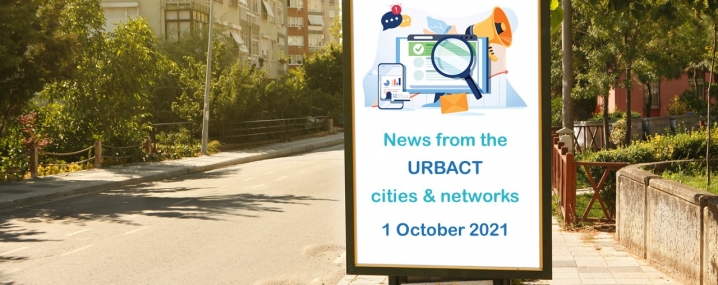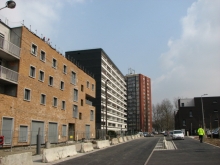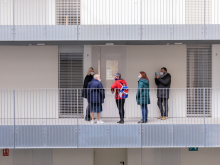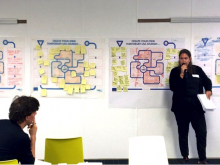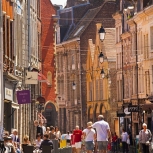
Lille
Once a deindustrialized city on a downward slope, today a national laboratory for urban renewal as well as a microcosm of Europe, the Lille region has experienced extraordinarily strong industrial developments since the 19th century.
In the 1960s and 1970s, the city faced a severe decline in the textile industries, coinciding with the collapse of coal mining in the region. Since the 1980s, the city has radically shifted to a service sector economy base which appeared to be great success.
Ideally located as a transport and logistics hub Lille offers the option of commuting to major European capitals - London (1h20 by train), Paris (1h) and Brussels (30 min) - thanks to its many high-speed international rail links. Lille is also home to the first fully automated subway with no driver. Based on an invention by one professor of the University of Lille, the two-line subway system now covers 45 km, which makes it the second longest in France after the Paris subway system.
Recent developments have been mainly based on new business clusters: Euralille - 3rd largest business district in France/Eurasante - 3rd ranked life sciences cluster/ Euratechnologies, digital economy and IT cluster.
Lille Metropole is also well known for its agri-food, ready-to-wear, clothing, worldwide retailing and creative industries, which were at the forefront of the transition from Lille's historic industrial past.
Despite its success, the economic reorganization has not been able to counterbalance the loss of employment in the manufacturing sector. Inequalities within the agglomeration are more pronounced than in any other major French city. Large city districts suffer from high rates of long-term unemployment, urban degradation, population decline, poor health conditions and dependence on social welfare. However, "priority neighbourhoods" show a high level of participation in local community life.
Lille is also the capital of the Hauts-de-France region and benefits from a strong cultural attractiveness. Lille Metropole which became European Capital of Culture in 2004, have since been pursuing its efforts in terms of culture by hosting major thematic cultural events approximately every three years. Thus, the city displays highly valued cultural and sporting facilities. For instance, Lille hosted the 2016 European Football Cup at the Pierre Mauroy stadium and hosts major rugby events in Stadium Lille Metropole.
Lille Metropole attracts more and more young people, which confirms its status as the youngest large French city: 35% of the population is under the age of 25.
This is both a challenge and a huge opportunity for the future. For more information watch this video here!
SOME RELATED NETWORKS
JOINING FORCES
EGTC
Article
The French "Politique de la Ville"
Article
Cities are finding innovative ways to help poor neighbourhoods
Article
Nine ways cities can become more just and inclusive
News
How to transfer urban good practice? Check URBACT's latest publication
Article

